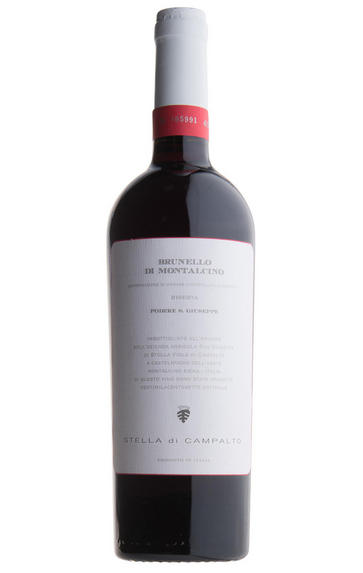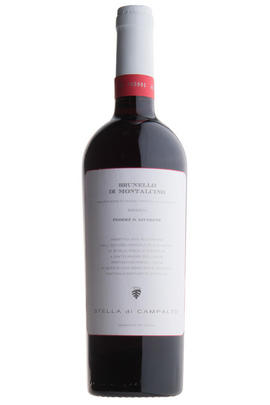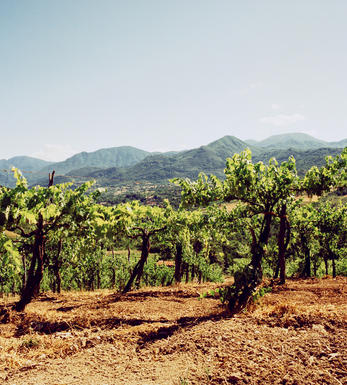
2004 Brunello di Montalcino, San Giuseppe, Stella di Campalto, Tuscany, Italy

Critics reviews
Antonio Galloni - Wine Advocate - Jun 09
The Wine Gang - A review of a further 20 wines from the press tasting - Aug 09
About this WINE

San Giuseppe, Tuscany
Run by the talented Stella di Campalto, the 6 hectare San Giuseppe wine estate in Castelnuovo dell'Abate, is strewn with several soil types (volcanic, iron-rich, galestro, clay...). It was originally planted in 1992, became organic in 1996 and then biodynamic in 2002.
Great attention is paid to harvesting the parcels of vines separately in order to capture the maximum fruit quality and soil expression, using gravity and a combination of large 38hl Austrian oak barrels and French oak barriques to vinify the juice as gently as possible.
All her fruit qualifies as Brunello di Montalcino, yet in 2003 she chose to declassify everything to Rosso di Montalcino; her inaugural Brunello has been released in 2009 for the 2004 vintage.

Brunello di Montalcino
Along with Chianti, Brunello di Montalcino is Tuscany's most famous DOCG and the region's boldest expression of Sangiovese. Located 30 miles south of Siena with the hilltop town of Montalcino as its epicentre, its 2,000 hectares of vines are naturally delimited by the Orcia, Asso and Ombrone valleys. Brunello is the local name for the Sangiovese Grosso clone from which Brunello di Montalcino should be made in purezza (ie 100 percent).
The Brunello di Montalcino DOCG has a whale-like shape: at its head, at 661 metres above sea level on ancient, stony galestro soils facing east and southeast lies the town of Montalcino, where the DOC was founded. As you follow the spine south towards the tail, the vineyards lose altitude – those around Colle Sant'Angelo are at 250 metres – while the soils become richer with iron and clay. Further east, in the shadow of the 1,734 metre Mont'Amiata lies the village of Castelnuovo dell'Abate where the vineyards are strewn with a rich mix of galestro, granitic, volcanic, clay and schist soil types.
Historically, the zone is one of Tuscany's youngest. First praised in 1550 by Leandro Alberti for the quality of its wines, it was Tenuta Il Greppo who bottled the inaugural Brunello di Montalcino in 1888. By 1929, the region had 925 hectares of vines and 1,243 hectares of mixed crops, while in 1932 it was decreed that only those wines made and bottled within the commune could be labelled as Brunello di Montalcino. Since then, the number of producers has risen from 11 in 1960 to 230 in 2006, while over the same period the vineyards have expanded from 1,000 hectares to 12,000. The region earned its DOC in 1966, and was upgraded to DOCG in 1980.
Brunello di Montalcino cannot be released for sale until five years after the harvest, or six years in the case of Brunello di Montalcino Riserva. During this time the wines should be aged for at least two years in oak, followed by at least four months in bottle (six months for Riservas); maximum yields are 55 hl/ha.
Rosso di Montalcino is declassified Brunello di Montalcino, released for sale 18 months after the harvest.
Recommended producers: Costanti, Fuligni, Lisini, San Giuseppe, Soldera, Cerbaiona

Sangiovese
A black grape widely grown in Central Italy and the main component of Chianti and Vino Nobile di Montepulciano as well as being the sole permitted grape for the famed Brunello di Montalcino.
It is a high yielding, late ripening grape that performs best on well-drained calcareous soils on south-facing hillsides. For years it was blighted by poor clonal selection and massive overcropping - however since the 1980s the quality of Sangiovese-based wines has rocketed upwards and they are now some of the most sought after in the world.
It produces wines with pronounced tannins and acidity, though not always with great depth of colour, and its character can vary from farmyard/leather nuances through to essence of red cherries and plums. In the 1960s the advent of Super Tuscans saw bottlings of 100% Sangiovese wines, as well as the introduction of Sangiovese/Cabernet Sauvignon blends, the most famous being Tignanello.


Buying options
Add to wishlist
Description
The nail-biting is over: Stella's debut Brunello di Montalcino has finally arrived! It's certainly been worth the wait. She's captured the essence of the vintage, a great one across all of central & northern Italy, while drawing on the panoramic and biodynamic beauty of her Castelnuovo dell'Abate vineyard. A full yet fine roast coffee, briary fruit freshness of this 100% Sangiovese Grosso/Brunello wine delights the nose; compact yet generous at the same time. One's struck by the wine's suaveness, the melting tannins, the gorgeous generosity of this clove, coffee bean and brambly Brunello; the biodynamics clearly weaving its magic in keeping whole experience deliciosuly fresh. To match with game ideally, drinking from 2010 till 2020, preferably with decanting.
David Berry Green, Fine Wine Buyer
wine at a glance
Delivery and quality guarantee